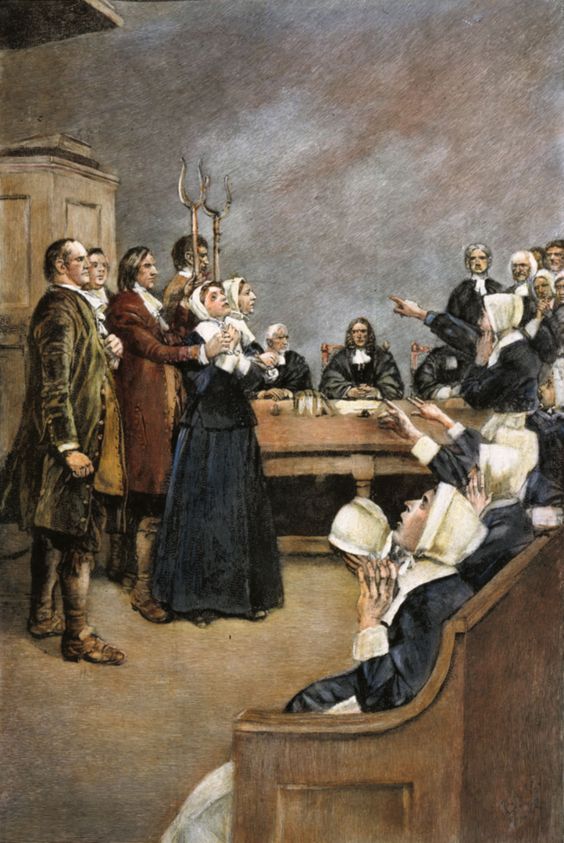On Knights With Shining Armour

Salem and Detroit. Wheat and Cheerios.
Salem, Massachusetts. 1692-1693.
Little Abigail and her friend Betty, now presumed to have merely been victims of Ergot poisoning, were declared possessed by a local doctor. Mass hysteria resulted. The girls threw accusations left, right, and centre. Many joined this bandwagon, some in a bid to settle ancient family feuds, some for the thrill, and others because they knew no better. By the time the governor’s wife was accused, promptly ending the senseless witch trials, 19 human beings and several dogs (“the devil’s pets”) had lost their lives, livelihoods had been ruined, and a community had become irreparably polarised. You would expect humanity to learn a thing or two from its predecessor’s mistakes, but humanity had something else in mind.
***
Detroit, Michigan. 2007.
Davontae, against his mother’s warning, stepped out into the frigid night in his pajamas. He was simply curious as to what had caused the hail of bullets that had taken dozens of police officers to his serene neighborhood. A man in blue approached him and asked him why he was roaming the streets that late. Inadvertently, Davontae said that he had some information about the shootings. He pointed the finger at some neighborhood kids, but the unconvinced officer told him to go back home.
Twenty minutes and no credible leads later, police were getting desperate. Since the closest person they had to a witness was the half-blind teenager, they went over to Davontae’s residence and requested his grandmother to allow him to go to the police station for further questioning. She agreed. That was the beginning of his 10-year nightmare.
No video or audio recording was taken of that first interview with the young man, a law that has since been amended in Michigan state, but many believe that the facts of the crime were literally forced down Davontae’s throat. Police had hit the jackpot with him. Davontae not only had the education of an 8-year-old, but also suffered from an emotional disability that made his imagination go wild. They saw a perfect opportunity to manipulate him into taking the fall for the crime that had already gained crazy media attention.
Davontae, 14, was charged with four counts of second-degree murder. Even his attorney, whose law license has since been revoked, advised him to plead guilty. The evidence against him seemed pretty convincing. “He” had drawn a sketch detailing the exact positions of the victims’ bodies at the time they were discovered. Furthermore, police had conveniently recorded damning footage of him verbally confessing to the crime. It was a slam-dank. 37 to 90 years in a maximum security prison would serve as a lesson to this skinny cold-blooded killer. Davontae died little by little in that prison, both physically and emotionally, but life went on. Until...
Detroit. 2008.
Into the Michigan police station walked self-proclaimed hitman, Vincent. He nonchalantly fessed up to twelve homicides, including the Runyon Street slayings Davontae had been imprisoned for 16 days earlier. Police were beside themselves with disillusionment.
“What incentive have you been promised for your confession?” Vincent was asked.
“Well, I have a three-week-old daughter now, and I can't continue living like I'm the only one I care about.”
Vincent led law enforcement officers to the AK-47 rifles he used to carry out the hits on his victims. He drew an accurate diagram (like “Davontae’s”) detailing the crime scene. At the time, he had no idea that a teenager was serving time in prison for his crime. He would have probably kept his confession to himself if he knew, and the teenager would continue rotting in jail, right?
Wrong. Davontae would rot in jail either way. Ironically, this is where this story takes a dramatic turn for the worst. Vincent was rightfully prosecuted, charged, and sentenced for eight of the twelve murders he confessed to. The Runyon Street slayings were not taken to trial, a classic police cover-up. Law enforcers realized the immense magnitude of their blunder. It was either Davontae’s life or their careers and reputations. They made the choice I'm afraid many people would – screw the kid.
Detroit. 2016.
In an affidavit, Davontae's unlikely knight wrote, “...I mean, it's hard enough being a guilty inmate. I can't begin to imagine what people who have been wrongfully incarcerated go through. I would, therefore, like to pledge that I, Vincent Smothers, (and not Davontae Sanford) am the perpetrator of the September 2007 quadruple homicide on Runyon Street....”. Evidently, not all heroes wear capes. Some wear prison jumpsuits.
Which character do you identify with most in this twisted tale of tragedy?







0 Comments
Add Comment